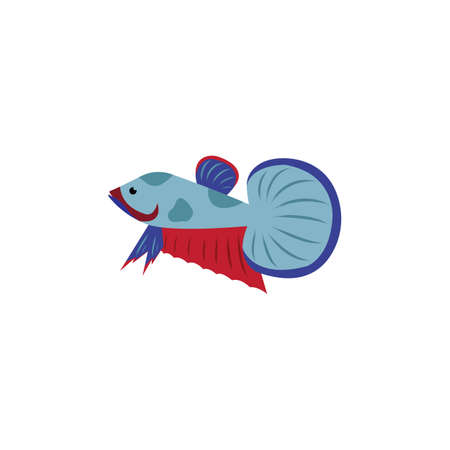Roots in the River: Origins of Net Fishing in India
Along the banks of India’s mighty rivers—Krishna, Godavari, and Ganga—the rhythmic dance of net fishing has unfolded for centuries. These waters, shimmering under dawn’s first light, have long been lifelines for communities whose lives gently ebb and flow with the current. Traditional net fishing here is more than a means to an end; it is a heritage steeped in patience, skill, and deep reverence for nature’s bounty. Generations ago, wise elders observed fish patterns, river moods, and the whispering winds, crafting nets by hand from locally sourced materials like jute or cotton. The art was passed from father to son, mother to daughter—woven into stories shared at dusk on mud-caked riverbanks. Today, many villages along the Krishna, Godavari, and Ganga still hold on to these practices. Community elders teach the young not only how to cast a net but also how to listen—to the river’s secrets and to each other—keeping alive a tradition as enduring as the rivers themselves.
2. Casting through Cultures: Local Methods & Net Types
Let’s drift gently along the flow of India’s sacred rivers and discover the fascinating world of net fishing, where every throw is a story woven by local hands. Across the Krishna, Godavari, and Ganga, communities have developed ingenious techniques, each echoing generations of river wisdom and cultural pride. From sunrise to dusk, riverside fishers—often in lungis or dhotis—gather with their nets, ready for the day’s patient ballet with the water.
Types of Fishing Nets
The variety of nets used is as vibrant as the cultures along these rivers. Each net has a name rooted in local dialects, carrying traditions unique to its region:
| Net Type | Local Name | Main Usage Area | Distinctive Features |
|---|---|---|---|
| Cast Net | Jal (जल) | Ganga, Krishna | Circular, thrown by hand, ideal for shallow waters |
| Drag Net | Valai / Veesuvalai | Godavari delta | Long rectangular net dragged by teams from both riverbanks |
| Gill Net | Pacha Jal | Lower Ganga basin | Netted mesh traps fish by their gills; set overnight or during tides |
The Rhythm of River Life
On the Krishna’s banks near Vijayawada, you might spot families casting jal nets with a practiced flick of the wrist—a skill often passed down from grandparents to grandchildren. Downstream on the Godavari, entire villages come together to pull massive valai nets in rhythmic unison, transforming fishing into a communal event filled with laughter and songs in Telugu or Marathi. In the foggy mornings by the Ganga at Varanasi, solitary fishermen slip quietly through the mist, setting out gill nets before returning for chai and stories by noon.
Cultural Echoes in Every Cast
No matter the technique or terminology—be it jal, valai, or pacha jal—the act of net fishing along these rivers is steeped in ritual and respect for nature. It’s not just about catching fish; it’s about honoring ancestral knowledge, adapting to seasonal rhythms like monsoon tides or winter flows, and celebrating community bonds. As river currents shift and times change, these age-old methods endure, shimmering with tales of patience and perseverance beneath India’s sunlit skies.

3. A Day by the Water: Fisherfolk Life and Rituals
As the first golden rays of the sun gently touch the surface of rivers like Krishna, Godavari, and Ganga, the fisherfolk communities are already stirring to life. The air is crisp, filled with anticipation and the earthy aroma of wet soil. Before the nets are cast, families gather at the water’s edge for a moment of prayer. With hands cupped and eyes closed, they offer flowers, turmeric, and a silent wish to Ma Ganga or the river goddess—seeking blessings for a fruitful catch and safe return. This sacred ritual binds their work with faith, reflecting deep respect for the rivers that sustain them.
The day unfolds in rhythms shaped by tradition. Elders teach youngsters how to mend nets, telling age-old stories of legendary catches and river spirits over steaming cups of chai sweetened with jaggery. There’s laughter as someone recounts a monkey stealing fish from an unattended basket, or a wise uncle shares tips on reading river currents. The community thrives not just on fish but on shared wisdom and camaraderie.
By late morning, boats glide silently across shimmering waters. Nets are cast with practiced grace—each movement honed by generations. Women along the banks sing folk songs in local dialects like Telugu or Bhojpuri, their voices blending with the gentle splash of oars. Evenings bring everyone together again; catches are sorted, and small fish are fried right on the shore. As dusk falls over the river, gratitude is quietly expressed for another day lived in harmony with nature’s flow—a rhythm as old as India itself.
4. Seasons and Celebrations: Festivals Around Fishing
If you stroll along the banks of the Krishna, Godavari, or Ganga during different times of the year, you’ll sense an ever-changing rhythm in riverside life. This beat is set not just by the monsoon’s arrival but also by the tapestry of festivals that shape the lives of fishing communities. In India, rivers are sacred—so when monsoon clouds gather or a festival approaches, it isn’t just about catching fish; it’s about paying homage to tradition and nature’s bounty.
Monsoon Magic: The Pulse of Riverine Life
The monsoon season is a lifeline for fishermen on these holy rivers. As rainwater swells the riverbanks, fish breed and migrate, filling nets with abundance. Net fishing during this time becomes both an economic necessity and a ritual act, believed to bring prosperity. Many families wait for the first rains, setting their nets with anticipation and hope.
Festivals by the Water: Rituals and Rejoicing
Across regions, religious festivals blend seamlessly with fishing traditions. In South India, especially along the Godavari and Krishna, Aadi Perukku is celebrated in July-August. Fisherfolk offer flowers and rice to the river goddess, seeking blessings for safe journeys and bountiful catches before casting their nets into the newly swollen waters. Further north, along the Ganga’s banks, Ganga Dussehra marks another special occasion when devotees believe the river’s powers are at their peak. It’s common to see fishers taking a holy dip before embarking on their work, merging faith with livelihood.
Major Fishing-Related Festivals Along Indian Rivers
| Festival | River Region | Time of Year | Cultural Significance |
|---|---|---|---|
| Aadi Perukku | Krishna & Godavari (South) | July-August | Blessings for water abundance & good catch |
| Narayani Jatra | Mahanadi (East-Central India) | June-July | Ritual purification & river worship by fisherfolk |
| Ganga Dussehra | Ganga (North) | May-June | Cleansing rituals, prayers for safety & prosperity |
A Cycle of Celebration and Survival
The interplay between natural seasons and spiritual events weaves a unique pattern in riverside communities. For many families—be it along Andhra Pradesh’s lush deltas or Bihar’s ancient ghats—fishing is more than a means of survival; it is entwined with celebration, gratitude, and age-old customs passed down through generations.
5. Flowing Forward: Challenges and Sustainable Hopes
As the sun sets over the Krishna, Godavari, and Ganga rivers, the nets are not just weighed down by fish, but also by the growing challenges faced by India’s traditional fishing communities. These mighty rivers, once brimming with aquatic life, now carry stories of change—some gentle as ripples, others as turbulent as monsoon currents.
The dwindling fish populations are among the most pressing struggles. Years ago, elders recall casting their nets at dawn and returning with a bountiful catch of rohu, catla, or hilsa. Today, patience is tested as the nets yield less, and fishermen speak of “machhli ki kami” (fish scarcity) with worried brows. Overfishing, unchecked sand mining, and the construction of dams have altered river flows and breeding grounds, leaving both young fry and seasoned fishers adrift.
Adding to this is the shadow of pollution—industrial runoff, untreated sewage, and plastic waste threaten to choke these ancient waters. The Ganga especially has become symbolic in India’s environmental discourse; while revered as ‘Mother Ganga,’ she often bears the burden of modernity’s carelessness. Fishers from Varanasi to Vijayawada lament how “paani ab pehle jaisa nahi raha” (the water isn’t what it used to be), as toxins disrupt delicate ecosystems.
Yet hope floats along these riverbanks. Communities are weaving tradition with new conservation efforts. Fishermen’s collectives now work closely with NGOs and local authorities to monitor catch sizes and observe seasonal bans—“no fishing during spawning,” they remind each other—a practice rooted in respect for nature’s cycles. Traditional wisdom is being revived: using larger mesh sizes so that juvenile fish slip through unharmed, or returning pregnant females to the water as an offering to river deities.
Younger generations are lending a hand too. Schoolchildren join ‘nadi safai’ (river cleaning) drives on weekends, learning both about their heritage and sustainable practices. There are tales of villages along the Godavari experimenting with cage aquaculture—blending ancestral skills with scientific advice from university experts. Even festivals like ‘Jal Jatra’ have started to include eco-awareness campaigns alongside age-old rituals.
As the current flows forward, these rivers teach us resilience—the way water finds its path around stones. The journey is far from easy, but when tradition weds innovation, there is hope that future generations will still cast their nets beneath dawn-kissed skies and hear stories of abundance whispered by the flowing waters.
6. River to Table: The Local Flavours of the Catch
When the sun dips low and nets are hauled ashore, riverside villages along the Krishna, Godavari, and Ganga come alive with the aroma of fresh catch sizzling on open flames. Fish caught just hours earlier begin their second journey—from river to plate. In Andhra kitchens near the Godavari, nimble hands dust silver carp with fiery red chilli powder and turmeric before slipping them into bubbling hot oil for a crispy fry-up, best enjoyed with fluffy rice and tangy gongura chutney.
Further north by the sacred Ganga, families gather under neem trees as elders simmer fish in mustard oil, adding kalonji seeds and green chillies to create a jhal—a spicy curry that’s both bold and soulful. Street vendors near river ghats tempt evening crowds with golden fried rohu or spicy machli tikka, served piping hot in banana leaves with a squeeze of lemon.
It’s not just about flavour; it’s about togetherness. Sharing a meal made from the day’s catch is woven into riverside life. Grandparents tell tales of legendary catches, children sneak crispy morsels while mothers are busy cooking, and neighbours drop by unannounced, drawn by the unmistakable scent of masalas wafting through open windows. These meals carry the taste of tradition—each bite seasoned with local spices and laughter echoing from the water’s edge.
The river offers more than just sustenance—it brings people together. Whether you’re tasting spicy Andhra chepa pulusu on a breezy verandah or biting into Bengali maach bhaja at a bustling street corner in Kolkata, every dish is a celebration of the day’s hard work, the river’s bounty, and bonds that flow deeper than water.

